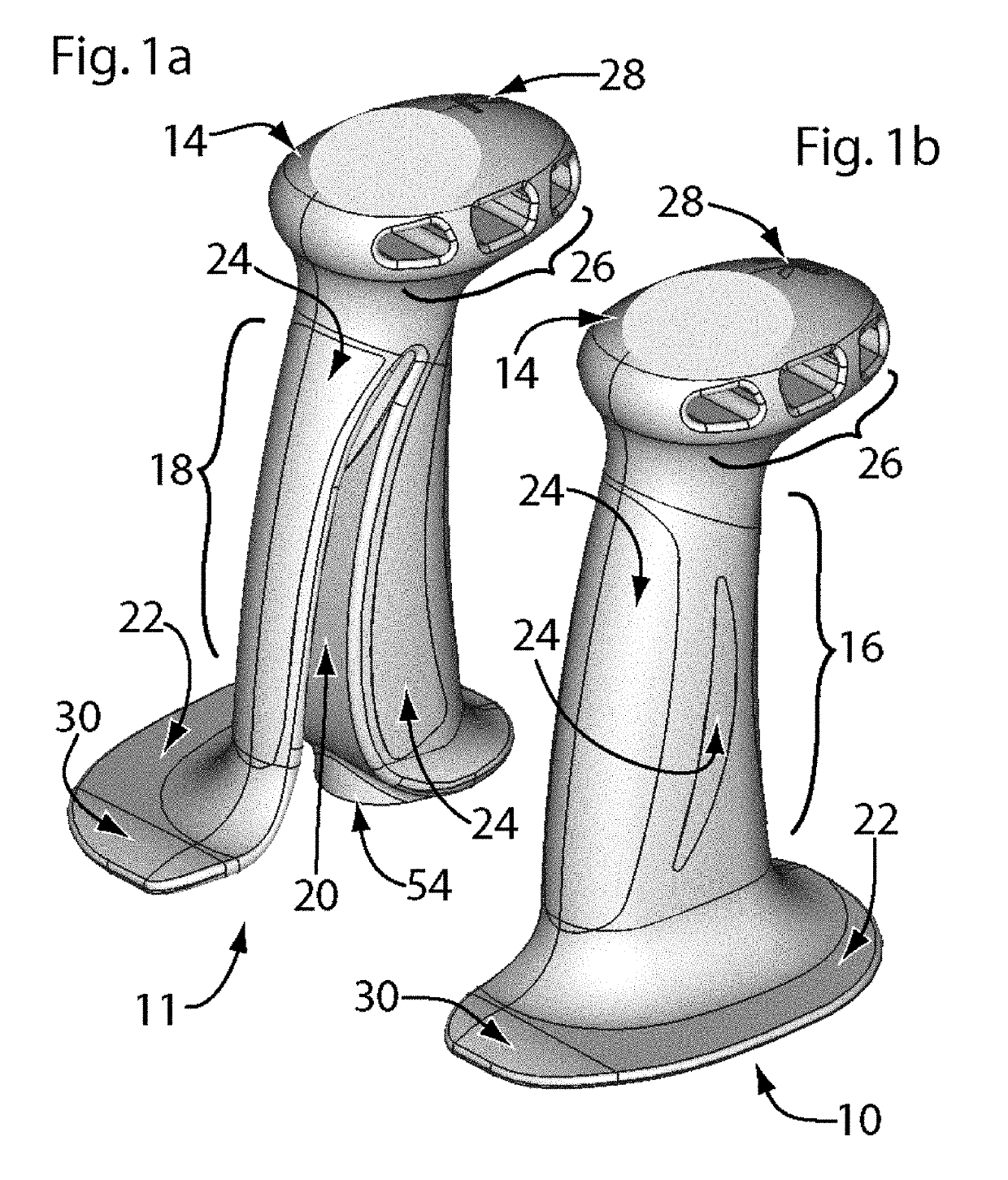Ergonomic handles for mobility & rehabilitation devices
a technology for mobility rehabilitation and ergonomic grips, applied in the direction of skis, sports apparatus, etc., can solve the problems of user hunching over both handles, preventing the normal walking pattern, and not promoting a normal walking pattern, so as to improve user stability, enhance upper body strength, and optimal ergonomic grips
- Summary
- Abstract
- Description
- Claims
- Application Information
AI Technical Summary
Benefits of technology
Problems solved by technology
Method used
Image
Examples
Embodiment Construction
[0046]All elements will now be introduced by reference to figures, then how each element functions and interacts with each other element will be described where necessary.
[0047]FIG. 1a shows a top isometric right sided view of a left handed ergonomic handle 11 with its bidirectional pommel 14, grip region 16, slit cavity 20, support ledge 22, textured surfaces 24, vents 26, handedness identifier 28, incline ledge 30, and pole receiver 54. FIG. 1b shows the same elements of a right handed ergonomic handle 10 from a top isometric right sided view. FIG. 2a shows a bottom isometric left sided view of a right handed ergonomic handle 10. FIG. 1b shows a bottom isometric left sided view of a left handed ergonomic handle 11. FIG. 3a shows a right side view of a right handed ergonomic handle 10. FIG. 3b shows a left side view of a right handed ergonomic handle 10. Note that the flared sector 18 refers to the ergonomic shape and angle of the rear side of the grip region 16. FIG. 4a shows a fr...
PUM
 Login to View More
Login to View More Abstract
Description
Claims
Application Information
 Login to View More
Login to View More - R&D
- Intellectual Property
- Life Sciences
- Materials
- Tech Scout
- Unparalleled Data Quality
- Higher Quality Content
- 60% Fewer Hallucinations
Browse by: Latest US Patents, China's latest patents, Technical Efficacy Thesaurus, Application Domain, Technology Topic, Popular Technical Reports.
© 2025 PatSnap. All rights reserved.Legal|Privacy policy|Modern Slavery Act Transparency Statement|Sitemap|About US| Contact US: help@patsnap.com



